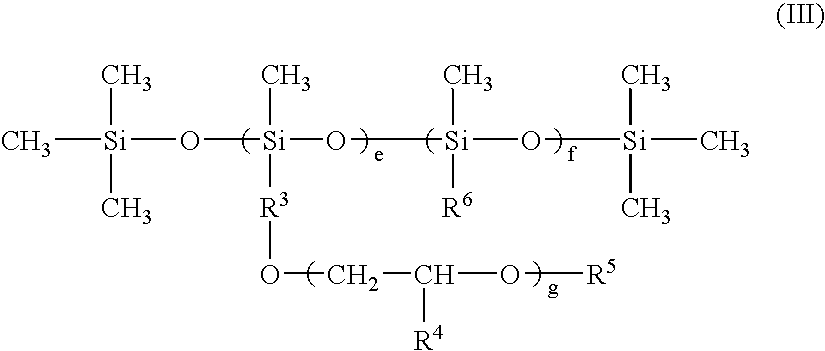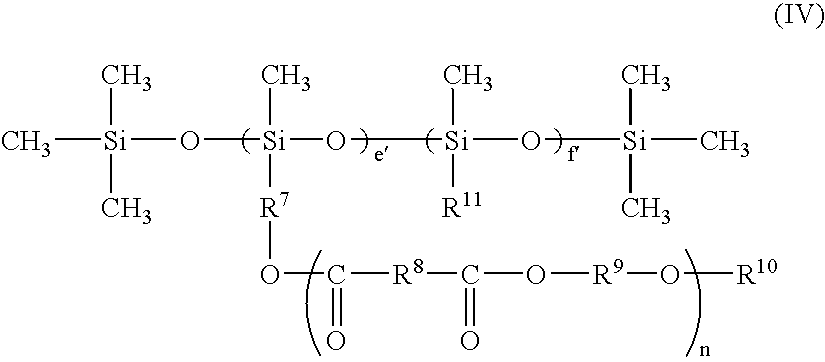Black composite particles for semiconductor sealing material, and semiconductor sealing material using the same
a technology of composite particles and semiconductor sealing materials, which is applied in the direction of non-metal conductors, cellulosic plastic layered products, conductors, etc., can solve the problems of crack formation on the surface of si chips, difficult to disperse carbon black in the form of fine particles in resin compositions, and crack formation in packages, etc., to achieve excellent dispersibility in binder resins, excellent moisture resistance, blackness and tinting strength
- Summary
- Abstract
- Description
- Claims
- Application Information
AI Technical Summary
Benefits of technology
Problems solved by technology
Method used
Image
Examples
example 1
[0263]Silica particles (particle shape: spherical shape; primary average particle diameter: 0.45 μm; sphericity: 1.02; BET specific surface area value: 5.4 m2 / g; fluidity index: 52; L* value: 93.1; a* value: 0.4; b* value: 0.3; C* value: 0.5) and black pigments (kind: carbon black (furnace black); particle shape: granular shape; primary average particle diameter: 0.022 μm; BET specific surface area value: 133.5 m2 / g; L* value: 14.6) were previously mixed with each other such that the amount of the black pigments mixed was 10 parts by weight (calculated as C) based on 100 parts of the silica particles. The resultant mixture was charged into Mechanofusion AMS-Lab (manufactured by Hosokawa Micron Co., Ltd.) and subjected to mechanochemical reaction, thereby obtaining black composite particles (I) comprising the black pigment coat formed on the surface of the silica particles.
[0264]The obtained black composite particles (I) were spherical particles having an primary average particle dia...
example 2
[0267]70 g of methyl hydrogen polysiloxane (tradename “TSF484”, produced by GE TOSHIBA SILICONE CO., LTD.) was added to 7.0 kg of silica particles (particle shape: spherical shape; primary average particle diameter: 0.45 μm; sphericity: 1.02; BET specific surface area value: 5.4 m2 / g; fluidity index: 52; L* value: 93.1; a* value: 0.4; b* value: 0.3; C* value: 0.5) while operating an edge runner. The resultant mixture was mixed and stirred at a linear load of 588 N / cm (60 Kg / cm) and a stirring speed of 22 rpm for 30 minutes, thereby forming a methyl hydrogen polysiloxane coating layer on the surface of the silica particles.
[0268]Next, 700 g of black pigments (kind: carbon black (furnace black); particle shape: granular shape; primary average particle diameter: 0.022 μm; BET specific surface area value: 133.5 m2 / g; L* value: 14.6) was added to the above obtained particles for 30 minutes while operating the edge runner. Further, the obtained mixture was continuously mixed and stirred a...
example 3
[0273]70 g of methyl hydrogen polysiloxane (tradename “TSF484”, produced by GE TOSHIBA SILICONE CO., LTD.) was added to 7.0 kg of silica particles (particle shape: spherical shape; primary average particle diameter: 3.22 μm; sphericity: 1.02; BET specific surface area value: 0.8 m2 / g; fluidity index: 48; L* value: 93.2; a* value: 0.4; b* value: 0.6; C* value: 0.7) while operating an edge runner. The resultant mixture was mixed and stirred at a linear load of 588 N / cm (60 Kg / cm) and a stirring speed of 22 rpm for 30 minutes, thereby forming a methyl hydrogen polysiloxane coating layer on the surface of the silica particles.
[0274]Next, 700 g of carbon black (particle shape: granular shape; primary average particle diameter: 0.022 μm; BET specific surface area value: 133.5 m2 / g; L* value: 14.6) was added to the above obtained particles for 30 minutes while operating the edge runner. Further, the obtained mixture was continuously mixed and stirred at a linear load of 588 N / cm (60 Kg / cm)...
PUM
| Property | Measurement | Unit |
|---|---|---|
| Length | aaaaa | aaaaa |
| Percent by mass | aaaaa | aaaaa |
| Percent by mass | aaaaa | aaaaa |
Abstract
Description
Claims
Application Information
 Login to View More
Login to View More - R&D
- Intellectual Property
- Life Sciences
- Materials
- Tech Scout
- Unparalleled Data Quality
- Higher Quality Content
- 60% Fewer Hallucinations
Browse by: Latest US Patents, China's latest patents, Technical Efficacy Thesaurus, Application Domain, Technology Topic, Popular Technical Reports.
© 2025 PatSnap. All rights reserved.Legal|Privacy policy|Modern Slavery Act Transparency Statement|Sitemap|About US| Contact US: help@patsnap.com



